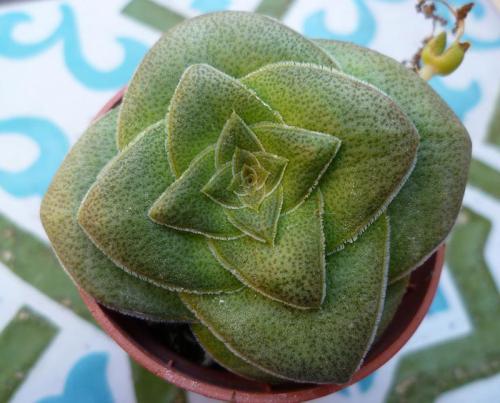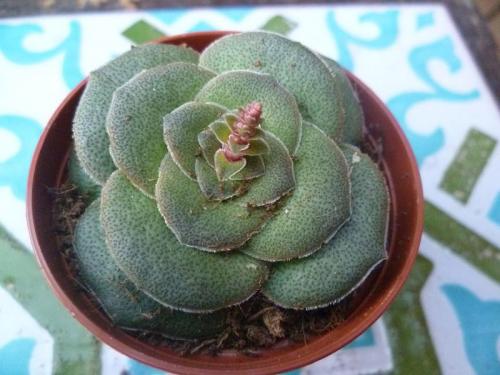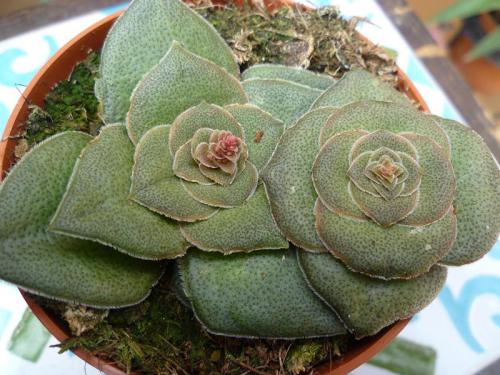HEMISPHAERICA Thunberg, 1778 (engl./ fr.)
Synonyms :
Purgosea hemisphaerica (Thunberg) T.Don (1834)
Crassula alooides Aiton (1789)
Crassula hemisphaerica var. foliosa Schönland (1929)
Crassula hemisphaerica var. typica Schönland (1929)
Section Rosulares
Distribution : Found in the Cape Province in mountains adjoining the south-western part of the Great Karoo from the Knersvlakte to near Worcester and extending eastwards to near Willowmore; usually growing on sandstone or quartzite derivatives on gentle slopes or in depressions.
Description (by Tölken, 1977) :
Perennials 5 - 12 (-16) cm high when flowering, with one, rarely two or three rosettes with closely packed recurved leaves so that the rosette is hemispherical in section, with old leaves remaining attached to the stem.
Leaves sessile, obovate rarely elliptic, (1-) 1.5 - 3 (-5) cm long, (0.8-) 1.5 - 2.5 (-3) cm broad, usually obtuse and mucronate, rarely acute, dorsiventrally flattened but often slightly grooved along main vein and somewhat fleshy and tough, glabrous except for a dense row of cilia, green, grey-green or brownish green, sheath 0.3 - 0.4 cm long and formed by the partial fusion of the clasping leaf bases. Hydathodes arranged in a dense row along the upper and lower margins and scattered over the upper but rarely on the lower surface, conspicuous.
Inflorescence spike-like with sessile axillary flowers or thyrsoid with shortly stalked lateral dichasia with 5-merous flowers with or without pedicels, usually with glabrous erect stem and with short broad bracts.
Flowers : Sepals broadly triangular, 0.5 – 1 mm long, rounded, with small marginal papillae to almost glabrous, fleshy, green, petals oblong-oblanceolate, (2-) 2.5 – 3 mm, each acute or rounded at the apex and with indistinct dorsal ridge and appendage, fused into a tube ca 0.2 mm long, with apices of the lobes at first erect, later somewhat recurving, white or cream, anthers black.
Flowering time : September - November
Note :
The photos above and below left in Rowley, Crassula, p. 121, are not correct.
See also : Two miniature crassulas by Rudolf Schulz
Note : A somewhat resembling plant, collected by Ph. Richaud in northern SA, is sometimes wrongly distributed as C. pseudohemisphaerica : Crassula spec.
-----------------------------------------------------------------------------------------------------------------------
Synonymes :
Purgosea hemisphaerica (Thunberg) T.Don (1834)
Crassula alooides Aiton (1789)
Crassula hemisphaerica var. foliosa Schönland (1929)
Crassula hemisphaerica var. typica Schönland (1929)
Section Rosulares
Distribution : localisée dans la province du Cap, dans les montagnes attenantes à la partie sud-ouest du Grand Karoo, depuis le Knersvlakte jusqu'aux environs de Worcester et s'étendant, vers l'est, près de Willowmore ; poussant habituellement sur du grès et autres dérivés de quartzite, en pentes douces ou dans les dépressions.
Description (selon Tölken, 1985) :
Plante vivace dépassant rarement 15 cm de hauteur au moment de la floraison, avec une (rarement deux ou trois) rosettes constituées de feuilles recourbées et serrées, donnant une rosette au profil hémisphérique dont les plus vieilles restent attachées à la tige.
Feuilles (10-) 15 – 30 (-50) x (8-) 15 – 25 (-30) mm, généralement obtuses et mucronées, rarement aiguës, aplaties dessus dessous mais souvent légèrement canaliculées au niveau de la nervure centrale, glabres à l'exception de cils marginaux, vertes, vert-grisâtre ou vert-marron.
Inflorescence : Un thyrse allongé ou en forme d'épi comportant de nombreuses fleurs avec pédicelles ou non ; pédoncule distinct muni de courtes bractées.
Fleurs : Sépales largement triangulaires, 0,5 – 1 mm de long, obtus ou arrondis, avec petites papilles marginales ou bien presque glabres, charnus et verts, corolle tubulaire, aux pétales soudés à leur base sur environ 0,2 mm, blanche ou crème, pétales oblongs-oblancéolés, (2-) 2,5 – 2,8 mm, aigus ou obtus, d'abord droits devenant plus ou moins recourbés, anthères noires.
Période de floraison dans l'habitat : Septembre - novembre.
Note :
- Les photos en haut et en bas à gauche, dans Crassula, p. 121, de Rowley, ne sont pas corrects.
- Une plante ressemblante, collectée par Philippe Richaud au nord de l'Afrique du Sud, est distribuée quelque fois sous le faux nom de C. pseudohemisphaerica : Crassula spec.
See also : Two miniature crassulas by Rudolf Schulz
Plants in habitat :
Warmwaterberg :
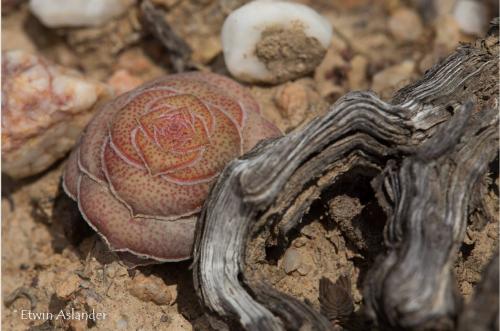
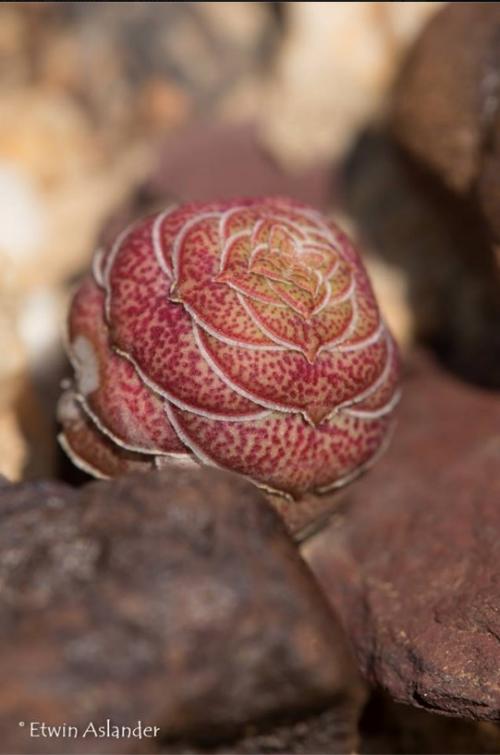
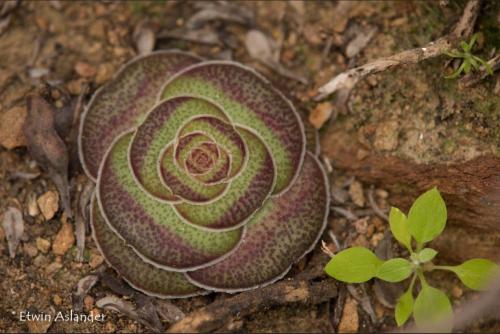
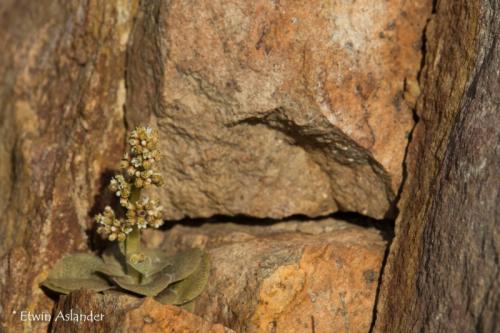
Bitterfontein district :
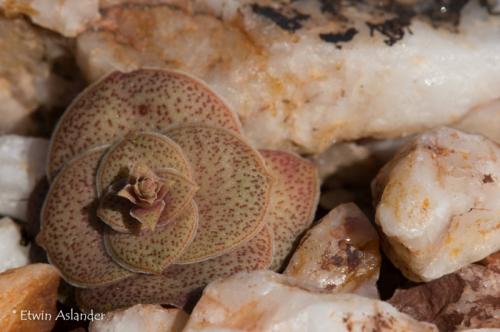
Photos Etwin Aslander
Vanrhynsdorp :
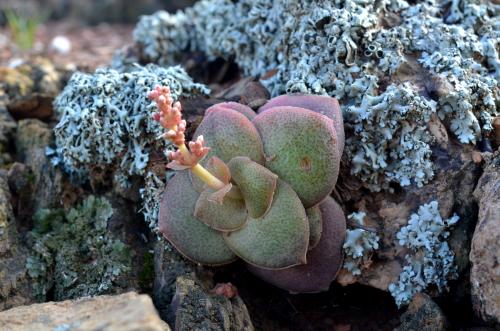
Photo Marc Mougin
Plants in cultivation :
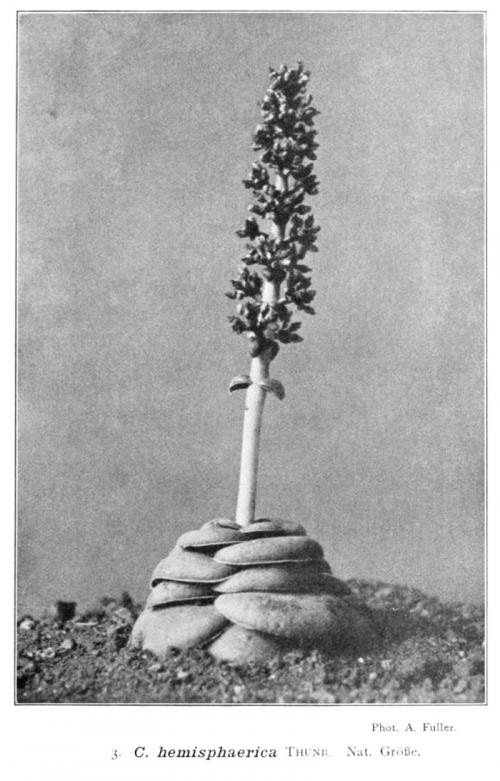
The earliest illustration of Crassula hemisphaerica, published in : Die Succulenten, Das Kapland, insonderheit das Reich der Kapflora, das Waldgebiet und die Karroo, pflanzengeographisch dargestellt.
In: Chun Carl (ed.) Wissenschaftliche Ergebnisse der Deutschen Tiefsee-Expedition auf dem Dampfer "Valdivia" 1898-1899 im Auftrage des Reichsamtes des Innern, 1908.
--------------------------------------------------------------------------
La plus ancienne illustration de Crassula hemisphaerica, publiée dans : Die Succulenten, Das Kapland, insonderheit das Reich der Kapflora, das Waldgebiet und die Karroo, pflanzengeographisch dargestellt.
Dans : Chun Carl (ed.) Wissenschaftliche Ergebnisse der Deutschen Tiefsee-Expedition auf dem Dampfer "Valdivia" 1898-1899 im Auftrage des Reichsamtes des Innern, 1908.
Dyer, R. Allen 1943 (Apr) Crassula hemisphaerica. Flowering Plants of Africa 23: t.892. L. Reeve & Co., London.
The typical form of C. hemisphaerica should have this very orbicular leaf shape, generally broader than long.
La forme typique de C. hemisphaerica devrait avoir cette forme de feuille très ronde, généralement plus large que longue.
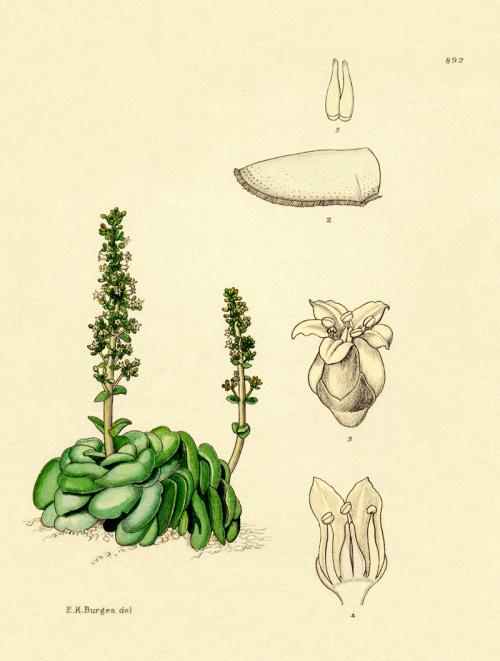
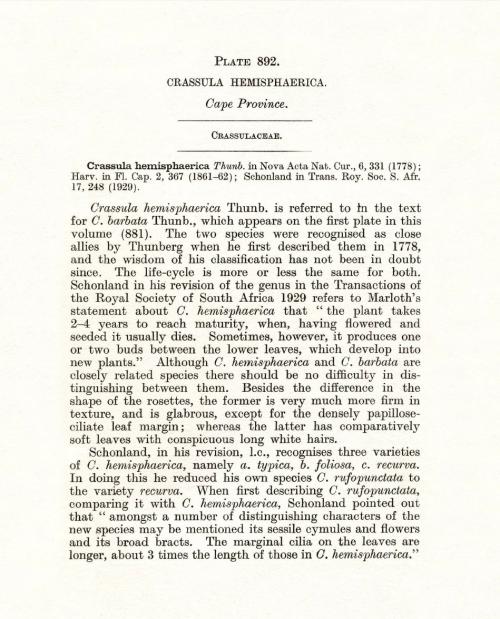
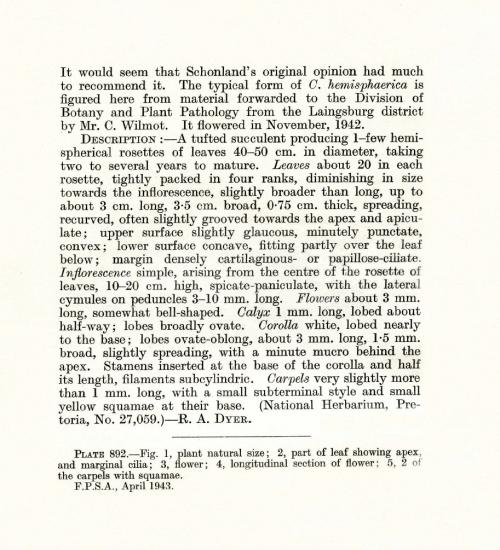
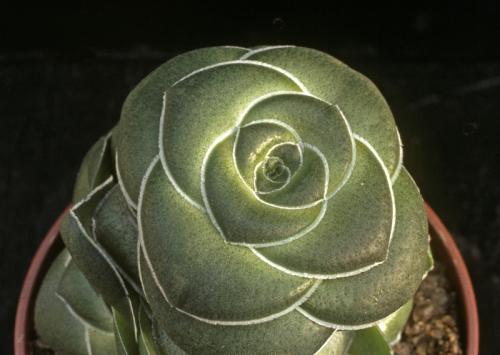
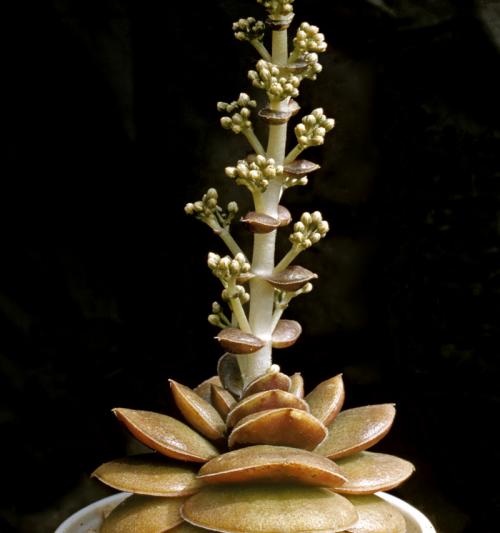
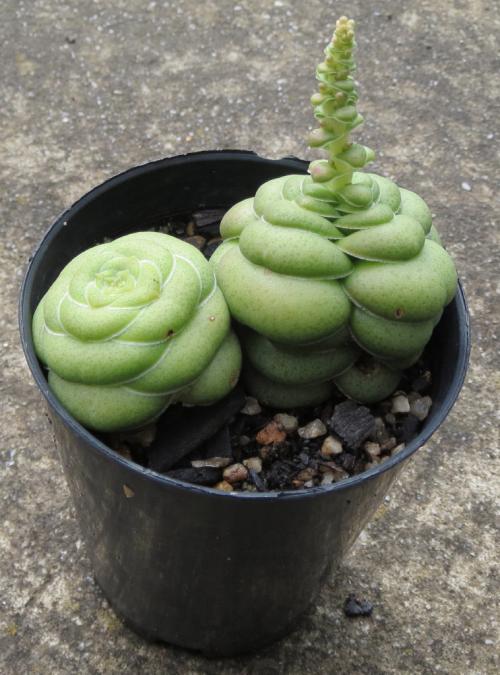
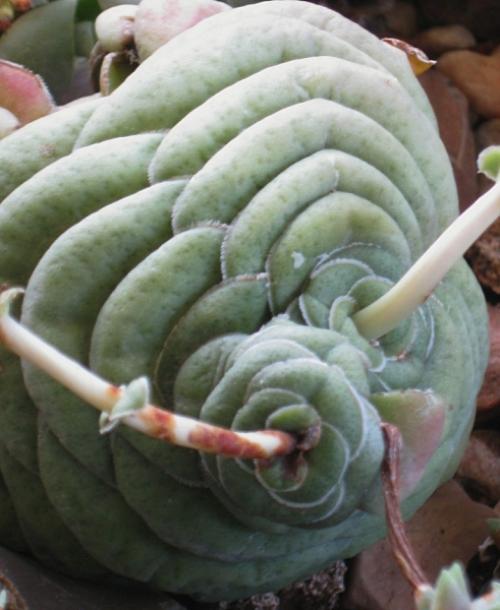
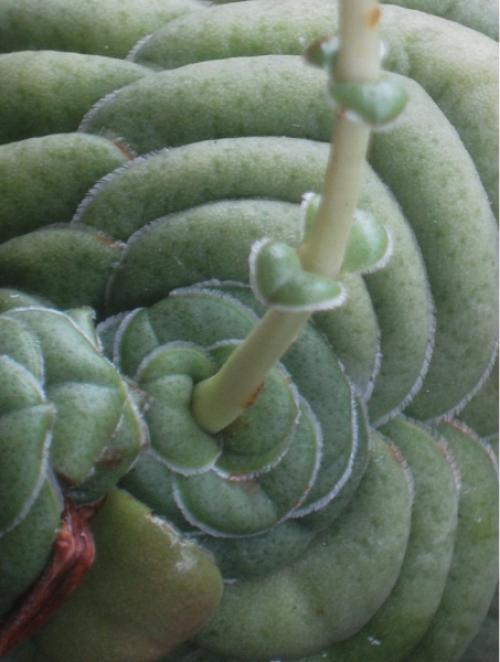
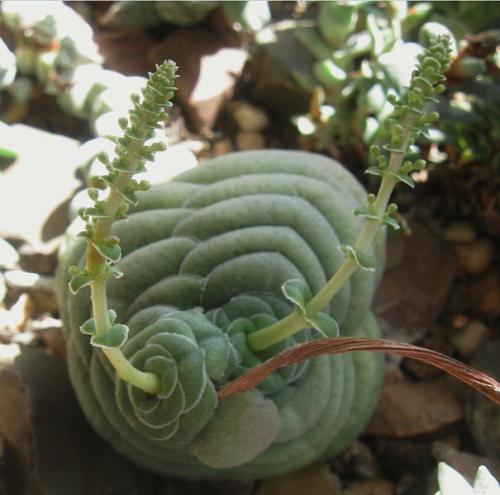
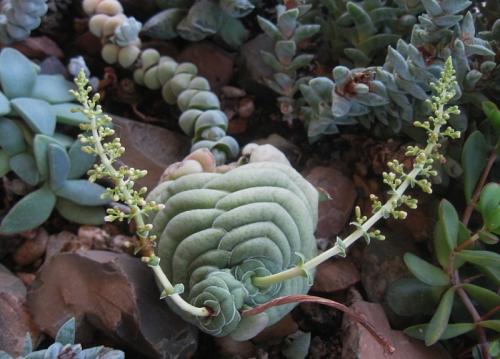
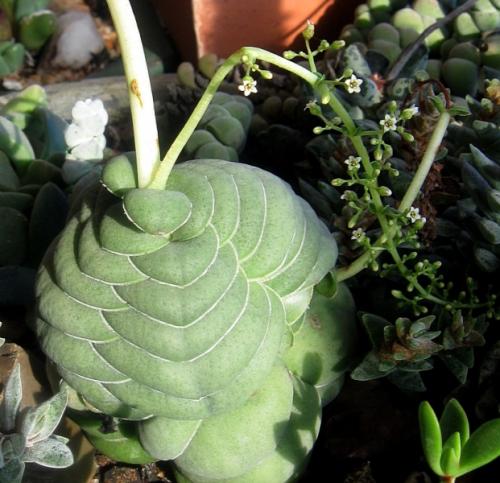
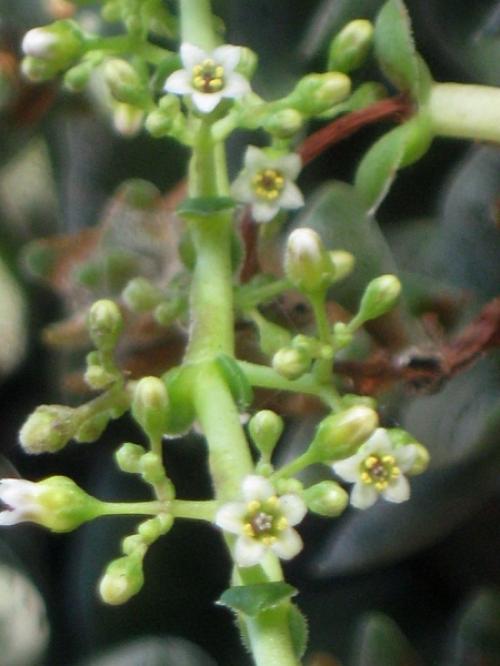
Photos Jacquie Koutsoudis
